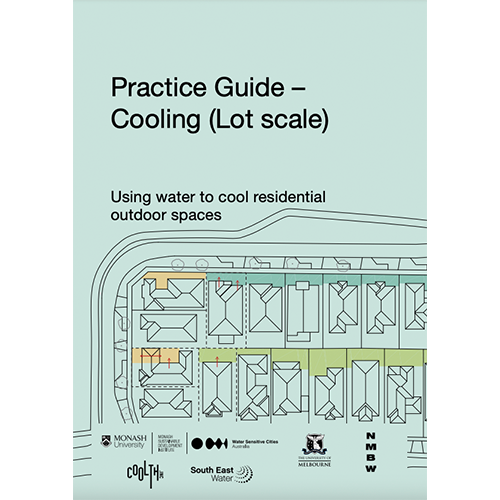Using water to cool residential outdoor spaces
Background
Finding effective ways to keep cool during hot weather is important for our health and comfort. Finding sustainable ways to stay cool is important for the planet.
This new practice guide shows how easy it can be to use water wisely to create cool, comfortable outdoor areas around the home. It involves combining water, plants and architecture to create natural shade, cool the air and cool the ground. Smart technologies can also help maximise the cooling effect.

The guide explains the science behind water’s role in cooling and the benefits of cooling with water.
Then it outlines practical step for designing a cool garden:
Step 1 – Choose a location.
Step 2 – Choose architectural designs or built features that minimise heat absorbing surfaces, make room for plants and provide shade.
Step 3 – Select plants for their shade and evapotranspiration characteristics, as well as their aesthetic, health and biodiversity benefits.
Step 4 – Cool with water by installing irrigation and misting systems.
Step 5 – Use smart systems to save water.


The CRCWSC has produced research, guidelines and
tools related to the following topics:
Integrated Urban Flood
Management
Climate change
mitigation
Community
engagement
Economics and
business case

